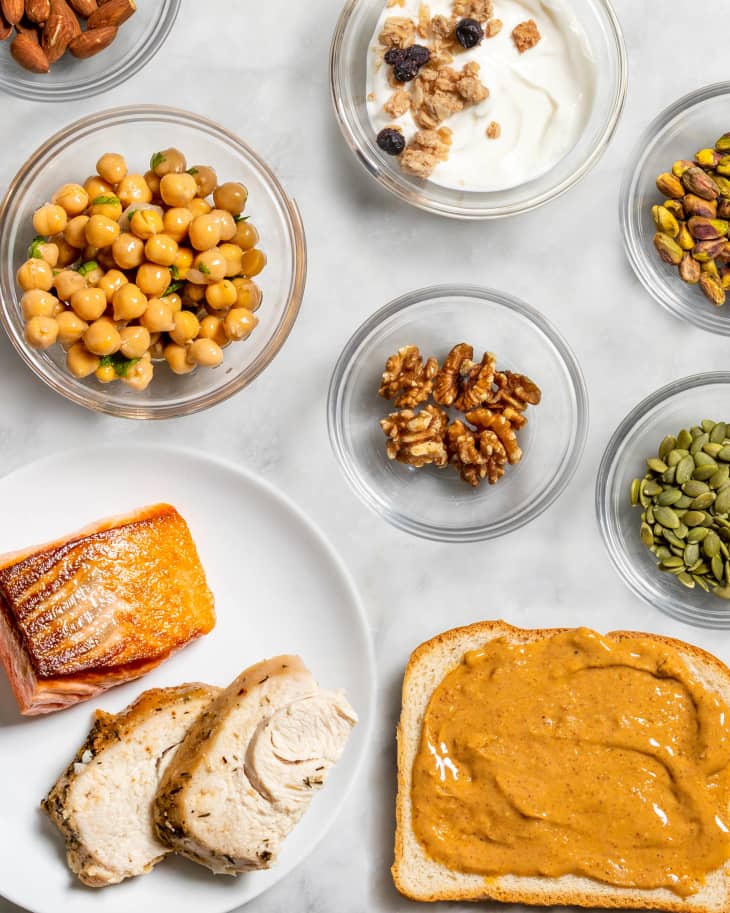What Does a Serving Size of Protein Look Like?
We all know that protein is important. To reach your daily recommended intake, you may be trying to eat a serving of protein-rich food at every meal. But the big question is, when it comes to protein, what exactly is a serving? Here’s what you should know about recommended servings, and how to tell at a glance what’s enough — no measuring, scales, or guides needed.
What Does a Serving Size of Protein Look Like?
The standard serving size for meat or fish is 3 ounces, which is about the size of the palm of your hand. The standard serving size for beans, legumes, and grains is around 1/2 cup or about the size of the front of your closed fist. A single serving of yogurt is equal to 1 cup. For nut or seed butter, the serving is around 2 tablespoons. Lastly, when it comes to whole nuts and seeds, a serving size is about 1 ounce.
What Is a Serving Size of Protein?
A serving size is most importantly a measurement that allows food manufacturers to create uniform nutrition labels for consumers, so you, the consumer, can have a clear image of what that food contains. It’s then up to you to determine how much of the item you need for your own wellness and nutrition needs.
These visual cues are references to help you understand what a standard serving of common protein sources are; adjust your daily intake of these wholesome items to your own needs.
What a Serving Size of Meat and Fish Looks Like
The standard serving size for any variety of meat or fish is 3 ounces. Rather than weighing this out, the best visual indicators of this amount is roughly the size of the palm of your hand or the size of a standard deck of playing cards.
What a Serving Size of Beans, Legumes, and Grains Looks Like
1/2 cup of cooked beans, legumes, and grains is the standard serving size. To put that in perspective, a can of beans contains about 1 3/4 cup, which is over triple this serving size. Besides simply scooping 1/2 cup into a bowl, 1/2 cup is roughly the size of the front of your clenched fist.
What a Serving Size of Nut Butters Looks Like
The standard serving size of any nut or seed butter, be it peanut, almond, sunflower, or even tahini, is 2 tablespoons. This looks like a heaping dinner spoon’s worth or a generous slather on toast.
What a Serving Size of Yogurt Looks Like
A nice-sized bowl of Greek or regular yogurt is equal to the 1 cup serving size that’s noted as standard. This also roughly looks like the size of a clenched fist, which is useful if you’re a bit unsure just how much your breakfast bowls hold.
What a Serving Size of Nuts and Seeds Looks Like
Since the serving size of nuts and seeds is based on weight, the actual numbered amount can vary drastically. Generally speaking, the serving size for nuts and seeds is 1 ounce. Walnuts are heavier and larger than pistachios so just 7 come out to an ounce, while 49 shelled pistachios are the same weight.
- 23 whole almonds
- 7 half walnuts
- 85 pumpkin seeds
- 49 shelled pistachios
